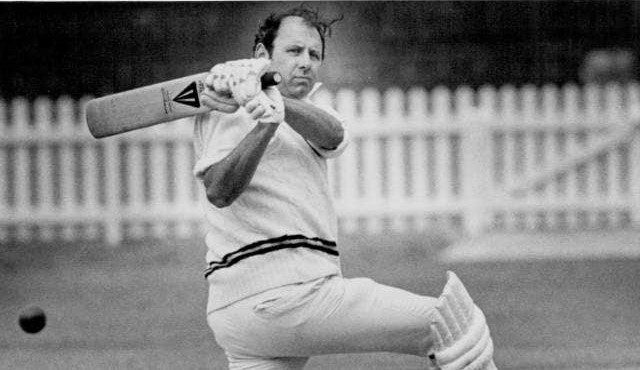Bruce Taylor’s Test Debut
0Bruce Taylor, who died in Lower Hutt yesterday at the age of 77, achieved a unique feat on his cricket Test debut in 1964/65.
It seems reasonable to assume Bruce Taylor did not expect to be picked for New Zealand’s long overseas cricket tour of 1965, during which they were to travel more than 60,000 kilometres through 19 countries. In January of that year he performed strongly with the ball for South Canterbury, but by the end of the month Taylor was still to make his Plunket Shield debut for Canterbury. Only two rounds of matches remained, and the touring party was being announced in two weeks’ time.
That all changed very quickly in February.
As is often the case in such a remarkable story, several things fell into place for Taylor. Firstly, Canterbury’s national team fast bowler Dick Motz was injured playing in the second Test against Pakistan, paving the way for Taylor’s Plunket Shield debut on 4 February at Eden Park. He scored 49 and took 3-57 in that match and despite Motz returning for the final round, Taylor kept his place, scoring 31 and taking 5-49 and 2-38 against Northern Districts as Canterbury won the Plunket Shield.
The touring team was named on the rest day of the third Pakistan Test. Gary Bartlett opened the bowling for New Zealand in that match, having performed well against Pakistan earlier in the tour, and the selectors were keen to include him in the touring team. But Bartlett was suffering from a back complaint and was judged not fit enough for the long tour, leaving an opening for Taylor’s unexpected selection.
It may be difficult now to imagine that a team of amateur cricketers for a five-month overseas tour would be named just nine days before departure, but on 23 February 1965 Taylor and his teammates set off for India. Their preparation on arrival was remarkable too: no warm-up matches and just two days in the nets before embarking on seven straight Test matches in India and Pakistan.
Bruce Taylor was not initially part of the Test match plans in India. The final piece in his debut jigsaw occurred on the morning of the second Test at Kolkata: batsman Barry Sinclair fell ill, and Taylor was selected at the last minute.
And so on 5 March 1965, four weeks after his Plunket Shield debut, Bruce Taylor found himself batting at the end of the first day of his first Test match, in partnership with 41-year-old Bert Sutcliffe. I doubt he had ever played a competitive game of cricket outside New Zealand prior to that day. RT Brittenden described Taylor’s first ball as being played from outside leg stump “with the back of his bat over his middle stump to the feet of a startled second slip”. Taylor survived to reach 13 not out by stumps, with Sutcliffe also still there on 74.
The following day saw both batsmen reach their centuries before lunch, before Taylor was out shortly after the break for 105. Even then his second day as a Test cricketer wasn’t finished, finding time to claim two wickets before stumps.
India’s resistance lasted for most of day three, but Taylor eventually ended the innings by dismissing Srinivas Venkataraghavan to claim his fifth wicket. His feat of a century and five wickets in an innings on debut remains unique across more than 2400 Test matches and although it was inevitably impossible to maintain such heights, he proved it was no fluke by taking 5-26 in the next Test and later in his career scoring a memorable hundred in just 86 minutes against the West Indies at Eden Park in 1968/69.
Bruce Taylor’s remarkable all-round performance on Test debut may eventually be matched, but he will always be the first to achieve the century and five-wicket-bag double.
Follow Andrew on Twitter

